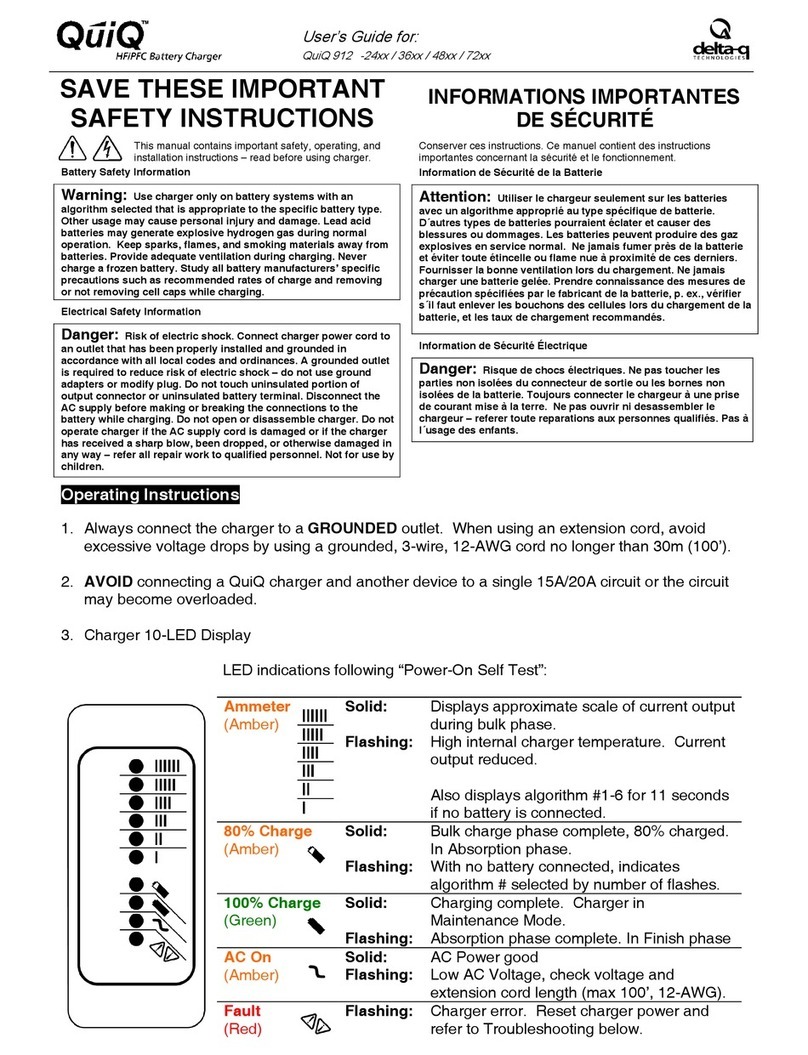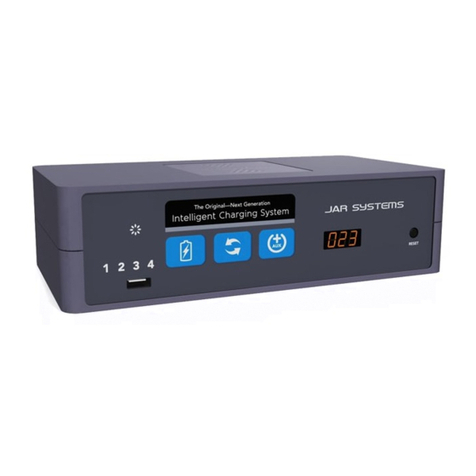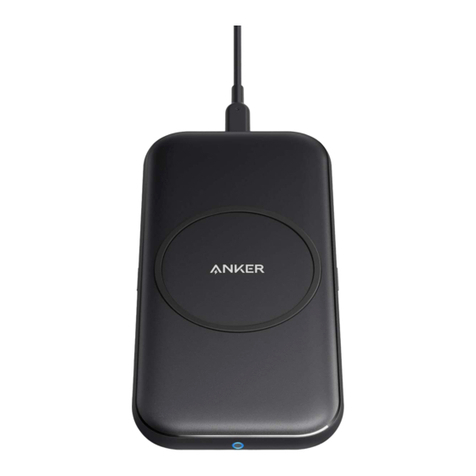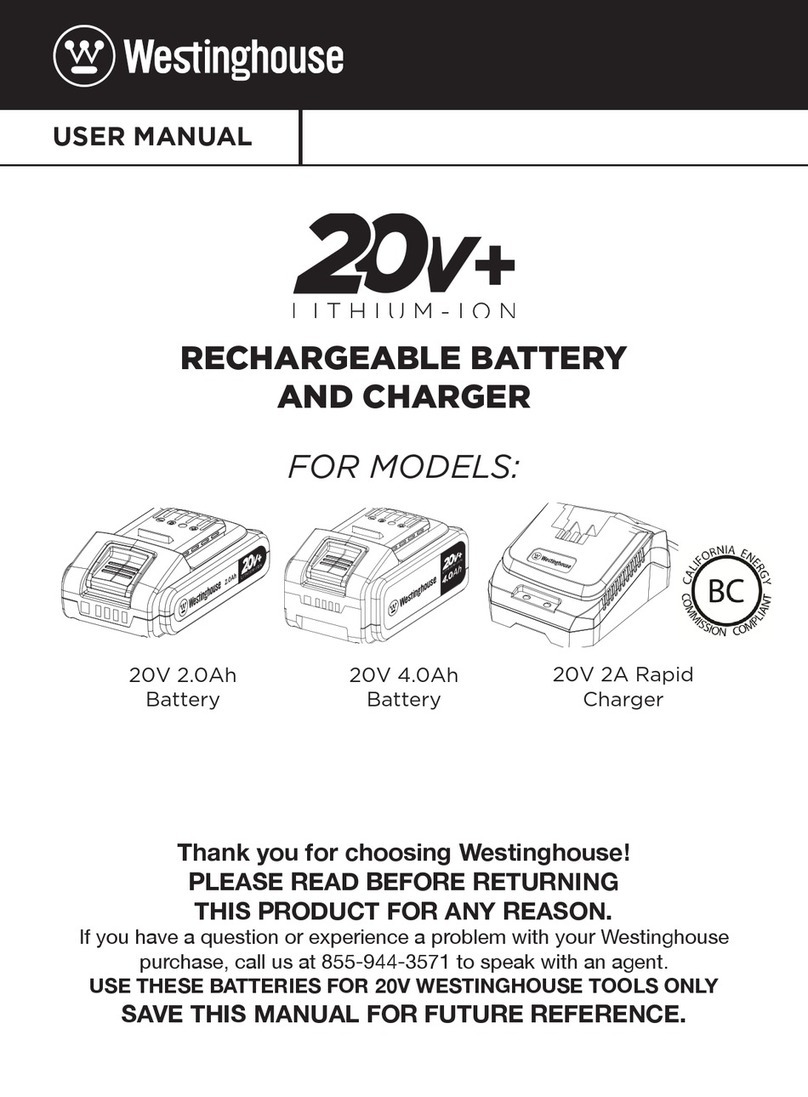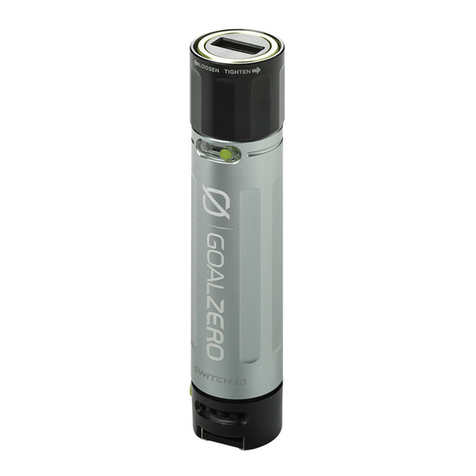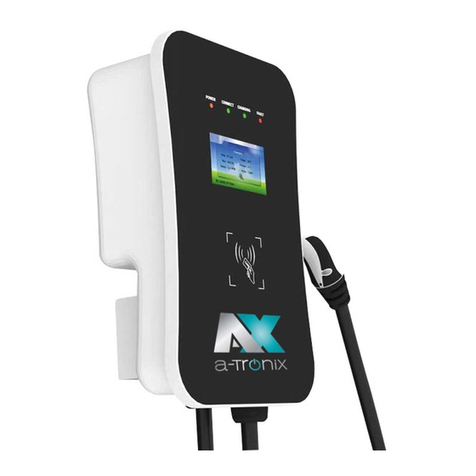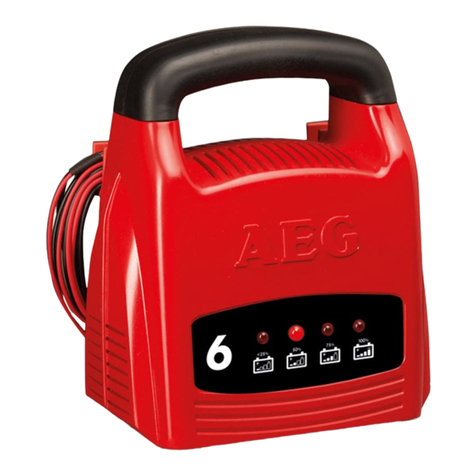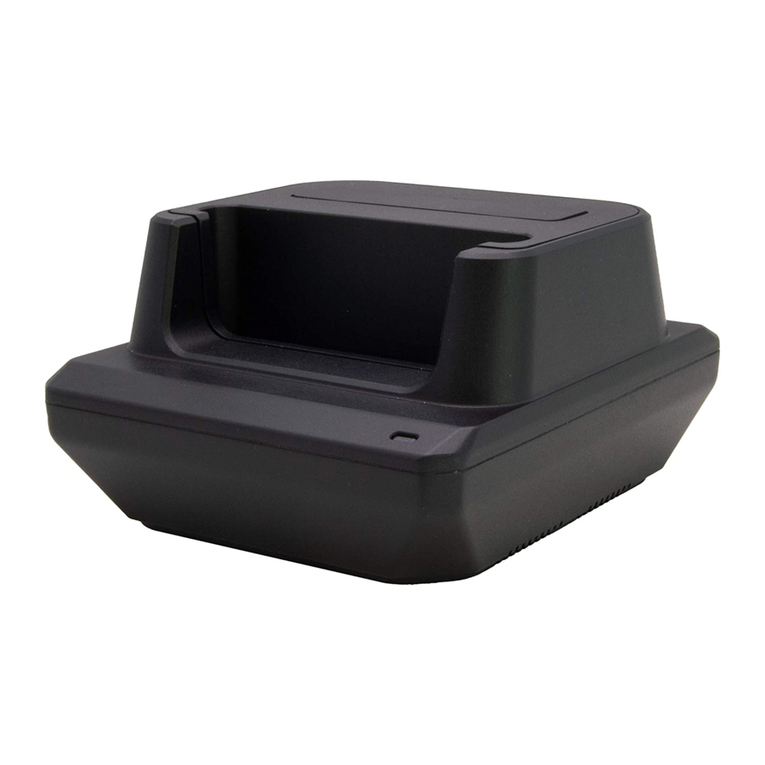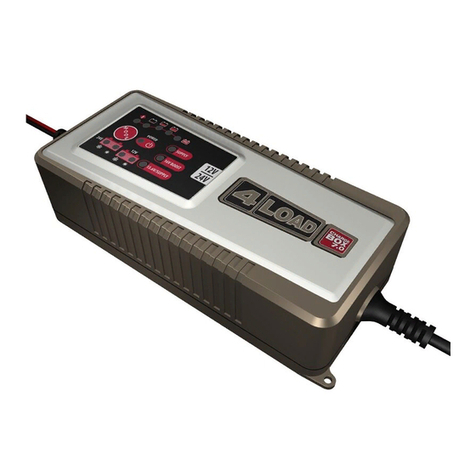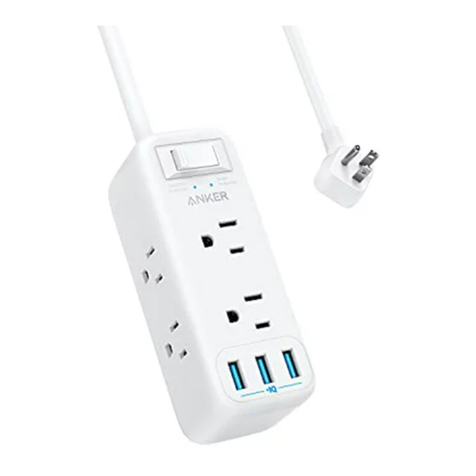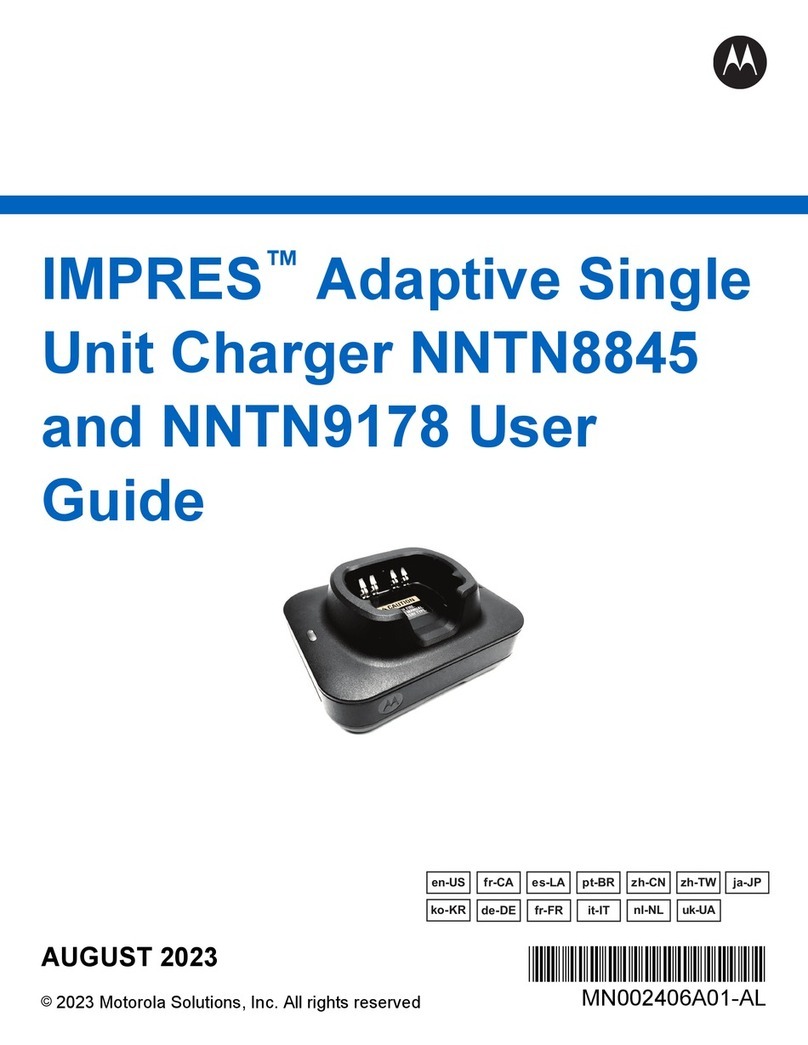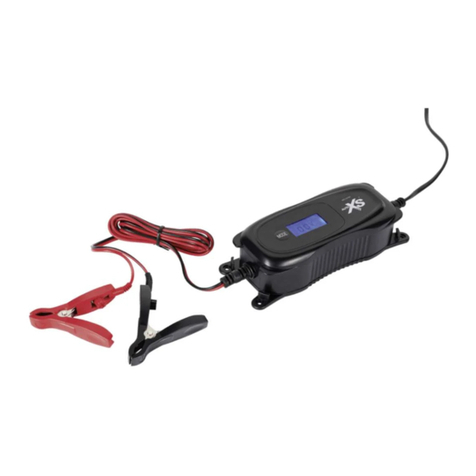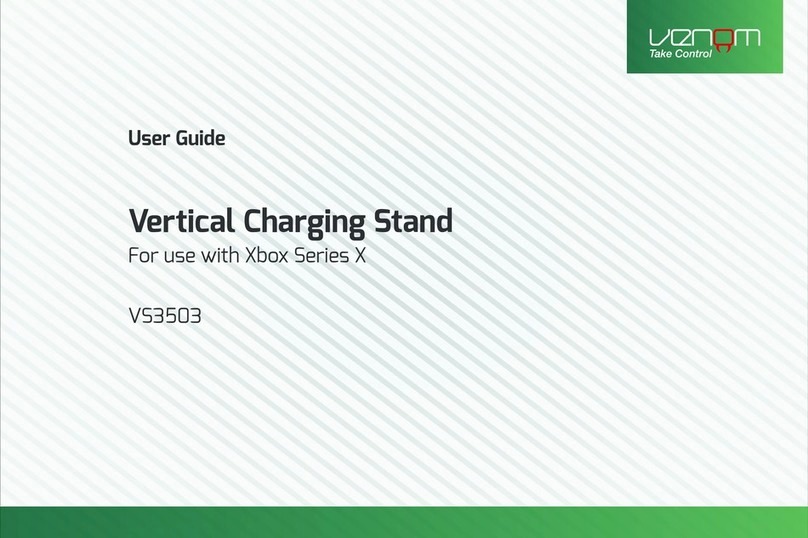Delta-q QuiQ 912-24 series User manual

SAVE THESE IMPORTANT
SAFETY INSTRUCTIONS
This manual contains important safety, operating, and
installation instructions – read before using charger.
Battery Safety Information
Warning: Use charger only on battery systems with an
algorithm selected that is appropriate to the specific battery type.
Other usage may cause personal injury and damage. Lead acid
batteries may generate explosive hydrogen gas during normal
operation. Keep sparks, flames, and smoking materials away
from batteries. Provide adequate ventilation during charging.
Never charge a frozen battery. Study all battery manufacturers’
specific precautions such as recommended rates of charge and
removing or not removing cell caps while charging.
Electrical Safety Information
Danger: Risk of electric shock. Connect charger power cord
to an outlet that has been properly installed and grounded in
accordance with all local codes and ordinances. A grounded
outlet is required to reduce risk of electric shock – do not use
ground adapters or modify plug. Do not touch uninsulated
portion of output connector or uninsulated battery terminal.
Disconnect the AC supply before making or breaking the
connections to the battery while charging. Do not open or
disassemble charger. Do not operate charger if the AC supply
cord is damaged or if the charger has received a sharp blow,
been dropped, or otherwise damaged in any way – refer all repair
work to qualified personnel. Not for use by children.
INFORMATIONS IMPORTANTES
DE SÉCURITÉ
Conserver ces instructions. Ce manuel contient des instructions
importantes concernant la sécurité et le fonctionnement.
Information de Sécurité de la Batterie
Attention: Utiliser seulement sur les batteries 72V avec un
algorithme approprié au type spécifique de batterie – voire le
manuel. D´autres types de batteries pourraient éclater et causer
des blessures ou dommages. Les batteries peuvent produire des
gaz explosives en service normal. Ne jamais fumer près de la
batterie et éviter toute étincelle ou flame nue à proximité de ces
derniers. Fournisser la bonne ventilation lors du chargement. Ne
jamais charger une batterie gelée. Prendre connaissance des
mesures de précaution spécifiées par le fabricant de la batterie, p.
ex., vérifier s´il faut enlever les bouchons des cellules lors du
chargement de la batterie, et les taux de chargement
recommandés.
Information de Sécurité Électrique
Danger: Risque de chocs électriques. Ne pas toucher les
parties non isolées du connecteur de sortie ou les bornes non
isolées de la batterie. Toujours connecter le chargeur à une prise
de courant mise à la terre. Ne pas ouvrir ni desassembler le
chargeur – referer toute reparations aux personnes qualifiés. Pas
à l´usage des enfants.
Operating Instructions
1. Always use a grounded outlet. When using an extension cord, avoid excessive voltage drops by using a grounded 3-wire 12 AWG cord.
2. The charger will automatically turn on and go through a short LED indicator self-test (Models 912-xx0x will flash all LED’s in an up-down sequence and
Models 912-xx1x will alternatively flash its LED RED-GREEN) for two seconds. If the charger is connected to battery pack, a trickle current will be applied
until a minimum voltage is reached. If the charger is used in an off-board application and the charger is waiting to be plugged into a battery pack, the
charging algorithm number will be displayed for 11 seconds (see “Check / Change Charging Algorithm”) before ultimately displaying an under-voltage fault
(fault disappears when plugged into battery pack).
3. Once a minimum battery voltage is detected, the charger will enter the bulk charging constant-current stage. Models 912-xx0x will display the current to the
battery on the bargraph and Model 912-xx1x will flash its LED GREEN off more than on to indicate <80% charge status. The length of charge time will vary
by how large and how depleted the battery pack is, the input voltage (the higher, the better), and ambient temperatures (the lower, the better). If the input AC
voltage is low (below 104VAC), then the charging power will be reduced to avoid high input currents (Models 912-xx0x ‘AC’ LED and Models 912-xx1x single
LED both flash YELLOW). If the ambient temperature is too high, then the charging power will also be reduced to maintain a maximum internal temperature
(Models 912-xx0x bargraph flashes and Models 912-xx1x single LED flashes YELLOW).
4. When the battery is at approximately 80% state of charge, the bulk stage has completed and an >80% charge indication is given (Models 912-xx0x turn on
the ‘80%’ LED and Models 912-xx1x will flash its LED GREEN on more than off). In the next phase known as the absorption or constant-voltage phase, the
last 20% of charge is then returned to the battery. The charging could be terminated at this point if the vehicle requires immediate usage, however, it is
highly recommended to wait until 100% charge indication is given to ensure maximum battery capacity and life.
5. A low current “finish-charge” phase is next applied to return and maintain maximum battery capacity (Models 912-xx0x will flash the ‘100%’ LED).
6. When Models 912-xx0x ‘100%’ LED or Models 912-xx1x single LED is continuously GREEN, the batteries are completely charged. The charger may now be
unplugged from AC power (always pull on plug and not cord to reduce risk of damage to the cord). If left plugged in, the charger will automatically restart a
complete charge cycle if the battery pack voltage drops below a minimum voltage or 30 days has elapsed.
7. If a fault occurred anytime during charging, a fault indication is given by flashing RED with a code corresponding to the error. There are several possible
conditions that generate errors. Some errors are serious and require human intervention to first resolve the problem and then to reset the charger by
interrupting AC power for at least 15 seconds. Others may be simply transient and will automatically recover when the fault condition is eliminated. To
indicate which error occurred, a fault indication will flash RED a number of times, pause, and then repeat.
[1 FLASH] Battery Voltage High: auto-recover
[2 FLASH] Battery Voltage Low: auto-recover
[3 FLASH] Charge Timeout: the charge did not complete in the allowed time. This may indicate a problem with the battery pack (voltage not attaining the
required level), or that the charger output was reduced due to high ambient temperatures.
[4 FLASH] Check Battery: the battery pack could not be trickle charged up to the minimum level required for the charge to be started. This may indicate that
one or more cells in the battery pack are shorted or damaged.
[5 FLASH] Over-Temperature: auto-recover. Charger has shutdown due to high internal temperature which typically indicates there is not sufficient airflow for
cooling – see Installation Instructions 1). Charger will restart and charge to completion if temperature comes within accepted limits.
[6 FLASH] QuiQ Fault: an internal fault has been detected. If Fault 6 is again displayed after interrupting AC power for at least 15 seconds, the charger must
be brought to a qualified service depot.
Maintenance Instructions
1. For flooded lead-acid batteries, regularly check water levels of each battery cell after charging and add distilled water as required to level specified
by battery manufacturer. Follow the maintenance and safety instructions recommended by the battery manufacturer.
2. Make sure charger connections to battery terminals are tight and clean.
3. Do not expose charger to oil, dirt, mud or to direct heavy water spraying when cleaning vehicle.
See flip side for Product Specifications and Installation Instructions for qualified personnel.
Unit 3 – 5250 Grimmer St.
Burnaby, BC, Canada V5H 2H2
Tel: 604.327.8244 Fax: 604.327.8246
www.delta-q.com
https://harrissupplyind.com-ToOrderPartsCall608-268-8080

Specifications
DC Output – see Operating Instructions
QuiQ Model: 912- 24xx 36xx 48xx 72xx
Voltage-nom (V) 24 36 48 72
Voltage-max (V) 33.6 50.4 67.2 100
Current-max (A) 25 21 18 12
Battery Type Specific to selected algorithm
Reverse Polarity Electronic protection – auto-reset
Short Circuit Electronic current limit
AC Input
All models
Voltage-max (Vrms) 85 – 265
Frequency (Hz) 45 - 65
Current-max (Arms) 12A @ 104VAC (reduced 20%<104V)
Current – nominal (Arms) 10A @ 120VAC / 5A @ 230VAC
AC Power Factor >0.98 at nominal input current
Operation
Charger Model: 912- xx0x (10 LED) xx1x (1 LED)
AC ON Solid YELLOW LED Active
AC LOW Flash YELLOW Flash YELLOW
Thermal Cutback Flash Bargraph Flash YELLOW
<80% Charge Indicator - Short Flash GREEN
>80% Charge Indicator Solid YELLOW Long Flash GREEN
100% Charge Indicator Solid GREEN Solid GREEN
Fault Indicator Flash RED Flash RED
DC Ammeter LED Bargraph -
Bat Temp Compensation Automatic Optional
Maintenance Mode Auto-restart if V<2.1Vpc or 30 days elapse
Mechanical
Regulatory
All models
Dimensions 28.0 x 24.5 x 11.0 cm (11 x 9.7 x 4.3”)
Weight <5 kg (<11 lbs) w/ standard output cord
Environmental Enclosure: IP46
Operating
Temperature
-30°C to +50°C (-22°F to 122°F), derated
above 30°C, below 0°C
Storage Temperature -40°C to +70°C (-40°F to 158°F)
AC input connector IEC320/C14 (require 1.8m localized cord)
DC output connector OEM specific w/ 12AWG wire
Safety
EN 60335-1/2-29 Safety of Appliances/ Battery Chargers
UL2202 EV Charging System Equipment
UL1564 2nd Edition Industrial Battery Charger
CSA-C22.2 No. 107.2 Battery Chargers- Industrial
Emissions
FCC Part 15/ICES 003 Unintentional Radiators Class A
EN 55011 Radio disturbance characteristics (Class A)
EN 61000-3-2 Limits for harmonic current emissions
EN 61000-3-3 Limits of voltage fluctuations and flicker
Immunity
EN 61000-4-2 Electrostatic discharge immunity
EN 61000-4-3 Radiated, radio-frequency, EMF immunity
EN 61000-4-4 Electrical fast transient/burst immunity
EN 61000-4-5 Surge immunity
EN 61000-4-6 Conducted Immunity
EN 61000-4-11 Voltage variations immunity
Installation Instructions
WARNING: The output of chargers with greater than 48V may
pose an energy and/or shock hazard under normal use. These
units must be installed in the host equipment in such a
manner that the output cable and battery connections are
only accessible with the use of a tool by qualified personnel.
1) Determine Mounting Location:
While its sealed nature allows the charger to be mounted virtually
anywhere, the choice of mounting location and orientation is
extremely important. For optimum performance and shortest
charge times, mount the charger in an area with adequate
ventilation. The charger should also be mounted in an area that
will be relatively free of oil, dirt, mud, or dust since accumulations
within the fins of the charger will reduce their heat-dissipating
qualities. Optimal cooling also occurs when the charger is
mounted on a horizontal surface with the fins vertical. More
airflow from below the charger will help cool the fins, so mounting
above open areas or areas with cut-outs for airflow is desirable.
Contact Delta-Q for information on other mounting orientations.
As the charger may get hot in operation, the charger must be
installed such that risk of contact by people is reduced. The
charger’s AC plug must be located at least 18” above the floor/
ground surface and the status display must be visible to the user.
2) Mounting Procedure:
Mount the charger by the mounting plate using appropriate
fasteners (i.e. 1/4" or M6 with locking hardware). For UL2202
compliance, a 12AWG green bonding wire with ring terminals
must be attached from the bonding stud located on the front of the
charger (identified by ) to the vehicle frame. The vehicle
connection must be made using corrosion resistant hardware
(e.g., a #10 stainless steel machine screw with at least two
threads of engagement and, if required, a paint piercing washer).
3) DC Battery Connection Procedure:
a) The green wire outputs battery voltage when the charger is not
plugged into AC to provide an interlock function – see Fig. 1. If
used, a user-supplied 1A fast-blow external fuse must be
installed inline to prevent damage. Shorting or drawing
more than 1A may damage charger and void the warranty.
b) Securely fasten the black ring terminal from the charger to the
negative terminal ("-", "NEG", NEGATIVE") of the battery pack.
c) Check that the correct charge algorithm is being used – refer to
section 4). Securely fasten the red ring terminal to the positive
terminal ("+", "POS", "POSITIVE") of the battery pack.
4) Check / Change Charging Algorithm:
The charger comes pre-loaded with algorithms for batteries as detailed in Table
1. If your specific battery model is not listed, please contact Delta-Q.
Each time AC power is applied with the battery pack NOT connected, the
charger enters an algorithm select/display mode for approximately 11 seconds.
During this time, the current Algorithm # is indicated on the ‘80%’ LED (Models
912-xx0x) or on the single LED (Models 912-xx1x). A single digit Algorithm # is
indicated by the number of blinks separated by a pause. A two digit Algorithm #
is indicated by the number of blinks for the first digit followed by a short pause,
then the number of blinks for the second digit followed by a longer pause.
To check / change the charging algorithm:
a) Disconnect the charger positive
connector from battery pack. Apply AC
power and after the LED test, the
Algorithm # will display for 11 seconds.
b) To change algorithm, touch positive
connector during the 11 second display
period to the battery pack’s positive
terminal for 3 seconds and then remove
– the Algorithm # will advance after 3
seconds. Repeat until desired Algorithm
# is displayed. A 30 second timeout is
extended for every increment.
Incrementing beyond the last Algorithm
moves back to the first Algorithm.
After desired Algorithm # is displayed,
touch the charger connector to the battery positive until the output relay is
heard to click (~10 seconds) – algorithm is now in permanent memory.
c) Remove AC power from the charger and reconnect the charger positive
connector to the battery pack. It is highly recommended to check a newly
changed algorithm by repeating step 4) above.
Product warranty is two years
-
please contact dealer of original equipment for warranty
service.
Note: This is a Class A product. In a domestic environment this product may cause radio
interference, in which case the user may be required to take adequate measures.
July 2006 © Delta-Q Technologies Corp. All rights reserved. PN: 710-xxxx Rev 1 V1.16
Alg
# Battery Type
43 Discover AGM
27 Crown CR-325
21 Exide Flooded
12 Exide/Sonnenschein Gel
7 J305 DV/DT CP
6 DEKA 8G31 Gel
5 Trojan 30/31XHS
4 US Battery USB2200
3 T105 DV/DT CP
1 Trojan T105
Table 1.
B+
Interlock
Charger
Internal
Output
Figure 1
F1
NC
NO
F2
GRN
B-
BLK/WHT
RED
1A
https://harrissupplyind.com-ToOrderPartsCall608-268-8080

Delta-Q Technologies Corp.
Unit 3, 5250 Grimmer Street www.delta-q.com T604.327.8244
Burnaby, BC Canada V5H 2H2 info@delta-q.com F604.327.8246
P O W E R I N M O T I O N
QuiQ Charger Troubleshooting Guide
Delta-Q’s QuiQ charger is designed for a long, trouble-free service life. Occasionally, the user may
encounter abnormal operation which can usually be corrected by following the procedures in this guide.
Indications on the Charger 10-LED Display
LED indications following “Power-On Self Test”:
Ammeter
(Amber)
Solid: Displays approximate scale of current
output during bulk phase.
Also indicates algorithm #1-6 for 11
seconds if no battery is connected.
Flashing: High internal charger temperature.
Current output reduced.
•Provide better airflow to the
charger.
•Try to move the charger to a cooler
location.
•Confirm that dirt or mud is not
blocking the cooling fins of the
charger. Clean the charger. Rinse
charger with low pressure hose if
required. Do not use high
pressure. Do not use a pressure
washer.
80% Charge
(Amber)
Solid: Bulk charge phase complete, 80%
charged. In Absorption phase.
Flashing: With no battery connected, indicates
algorithm # selected by number of
flashes.
100% Charge
(Green)
Solid: Charging complete. Charger in
Maintenance Mode.
Flashing: Absorption phase complete. In Finish
phase
AC On
(Amber)
Solid: AC Power good
Flashing: Low AC Voltage, check voltage and
extension cord length (max 100’, 12-
AWG or 50’ 14-AWG).
Fault
(Red)
Flashing: Charger error. Check code and refer to
troubleshooting guide below.
https://harrissupplyind.com-ToOrderPartsCall608-268-8080

Fault Indications:
Fault LED
Flashes (Red) Explanation and Solution
High Battery Voltage Detected
•Check that the battery charger voltage is consistent with the battery pack
voltage. The first two digits of the four digit model name indicate the
battery voltage the charger supports.
•Check for wiring errors.
•High battery voltage could also occur if there is another source charging
the battery. Disconnect any other sources during charging.
•If this problem does not clear after the battery voltage is confirmed to be
less than 2.4V per cell, return the charger for service.
•This fault will automatically clear and the charger will restart charging
when this problem is removed.
Low Battery Voltage Detected
•Check the battery and connections to the battery.
•Check the nominal battery voltage. The first two digits of the four digit
model name indicate the battery voltage the charger supports. Confirm
that a nominal battery voltage is the same as the charger voltage.
•If this problem does not clear after the battery voltage is confirmed to be
higher than 1V per cell and all connections are good, return the charger
for service.
•This fault will clear automatically when the low battery voltage problem is
rectified.
Charge Timeout - Indicates the battery failed to charge within the allowed time. This
could occur if the battery is of larger capacity than the algorithm is intended for. In
unusual cases it could mean charger output is reduced due to high ambient
temperature. It can also occur if the battery is damaged, old, or in poor condition.
•Check the battery for damage such as shorted cells and insufficient
water. Try the charger on a good battery.
•If the same fault occurs on a good battery, check the connections on the
battery and connection to AC power, and AC voltage.
•Confirm that the nominal battery pack voltage is the same as the battery
charger voltage.
•If a charger displays this fault on a battery pack, and the pack is of
questionable status, reset the charger by disconnecting AC power for 30
seconds, and then reconnect the AC to start a new charge cycle. After a
few charge cycles this problem could stop occurring as the pack
“recovers.”
•This fault must be cleared manually by unplugging the AC, waiting 30
seconds and reconnecting the ac power.
Check Battery - This fault indicates the battery pack could not be trickle charged up to
the minimum level required for the normal charge cycle to be started.
•Check that none of the battery pack connections between modules are
reversed or incorrectly connected.
•Check that one or more cells in the battery are not shorted.
•Confirm that the nominal battery pack voltage is the same as the battery
charger voltage.
https://harrissupplyind.com-ToOrderPartsCall608-268-8080

•Try the charger on a good battery.
•If this fault occurs the battery pack is likely in poor condition. Try to
recover the pack with a charger that can charge the individual cells –
such as an automotive charger. Be sure to set this charger to the
appropriate voltage – 6V per 6V battery, 12V per 12V string/battery.
Over-Temperature: This fault indicates the charger has become too hot during
operation. This extra fault indication (as opposed to the flashing ammeter described
above), indicates an even higher temperature was reached inside the charger.
Though not damaging to the charger, charge time will be extended significantly
•This fault indication will not clear automatically, but the charger will
restart charging automatically when the temperature drops. The fault
indication must be cleared manually by unplugging the AC power,
waiting 30 seconds and reconnecting the AC.
•If possible, install the charger in a cooler location or increase cooling air
flow to the cooling fins.
•Confirm that dirt or mud is not blocking the cooling fins of the charger. If
required, clean the charger by rinsing it with a low pressure hose. Do
not use high pressure. Do not use a pressure washer.
QuiQ Internal Fault: This fault indicates that the batteries will not accept charge
current, or an internal fault has been detected in the charger. This fault will nearly
always be set within the first 30 seconds of operation. If it occurs after the charger
has started charging normally, be sure to make a note of it.
•Try to clear the fault by unplugging AC power, waiting 30 seconds and
reconnecting the AC.
•Check all battery connections. Look for a high resistance connection.
The most likely reason for this fault is a fault in the battery such as a bad
battery connection, an open cell, or insufficient water.
•This fault will occur if an internal fuse inside the charger blows. If the
green wire is shorted to ground even momentarily this fuse will blow. To
check the fuse, measure with an ohmmeter between the green and red
wires with the AC disconnected. If a short circuit is not measured, the
fuse has blown. Return unit to a service depot to have this fuse
replaced.
•For software revision 0.81 or older, this fault may indicate that the input
or output voltage went out of range. Check input and output connections
before returning the unit to a service depot. Charger may need to be
brought to a service depot to have its software upgraded. Refer to the
lower right hand corner on the back of the Product Manual to determine
the software revision.
•If this fault occurs after battery charging has started, confirm that AC
power was not interrupted and that all battery connections are good.
•If all battery connections are good, an internal fault has been detected
and the charger must be brought to a qualified service depot.
Other Indications:
Indication Explanation and Solution
AC On LED Lit,
Charger won’t
start charging.
Charger has detected a condition that does not allow it to charge
https://harrissupplyind.com-ToOrderPartsCall608-268-8080

•Confirm battery connections are good.
•The nominal voltage for a lead acid battery is 2 V per cell. For example,
a 48V battery will have 48/2 = 24 cells.
•If the battery voltage is greater than 2.5V per cell, the charger will not
start charging.
•If the battery voltage is less than 0.5V per cell, the charger will not start.
•For software revisions 0.81 or lower, the charger will not start charging if
the battery voltage is less than 1V per cell. Refer to the lower right hand
corner of the back of the Product Manual to determine the software
revision.
•Check for any fault codes that might be set and refer to the descriptions
above.
•A fully charged battery will draw very little current, but will not show
100% charged immediately. The charger will change to Absorption
mode in under 5 minutes once the conditions for the end of bulk charge
have been met. The 80% LED will illuminate at this time. During the
final phase of charging, the battery will only accept a very small current –
the charger is unable to accelerate this portion of the charge cycle
without damaging the battery.
Excessive
Battery Watering
or Strong
Sulphur (Rotten
Egg) Smell
Overcharging or high battery temperature. These symptoms are unlikely to be caused
by too high a charge current since the maximum charge current of the charger will be
small compared to even a moderately sized battery pack. The most likely cause for
this problem is incorrect charge algorithm setting and/or high ambient temperatures.
•Confirm that the battery pack is not too small – usually > 50Ah.
•Confirm that the nominal battery voltage matches the charger output
voltage.
•Confirm the correct battery charge algorithm. If the battery pack is new,
the algorithm will need to be changed if the pack is not the same as the
old one. Refer to the Product Manual for instructions on how to
determine and change the battery charge algorithm.
•If the output voltage of the charger seems excessive, return the charger
for service. Contact Delta-Q to get the expected battery voltage settings
for the charger in question. Be sure to have the charger’s serial number
and charge algorithm setting available when calling.
Difficulty
Changing the
Default Battery
Charge
Algorithm
The mode to change the battery charge algorithm can only be selected during the first
10 seconds of operation. Refer to the Product Manual for instructions.
If the 10 second window is missed, cycle AC power by unplugging the charger,
waiting 30 seconds, and reconnecting AC power.
To extend Battery Charge Algorithm Change Mode by 30 seconds (120 seconds on
newer models), connect the charger output to a good battery for approximately 1
second and then disconnect the battery again.
General Troubleshooting
Should the condition of a charger be in doubt, the flow chart on the next page should be followed to check
the charger’s operating condition.
19Aprr07 chui@delta-q.com
https://harrissupplyind.com-ToOrderPartsCall608-268-8080

Delta-Q Technologies
QuiQ Charger Troubleshooting Flow Chart
Does the
Charger Turn
On?
Disconnect charger from batteries
and connect to AC Power
Yes
No
Ensure 90-
260VAC at
Charger Input
Does the
Charger Turn
On?
Yes
No
Check for correct algorithm
number (refer to manual for
procedure)
Charger Input Failure -
Return Unit
Does the
algorithm
match the
batteries?
Change algorithm to correct
setting for batteries.
No
Connect charger to batteries
and plug charger into AC.
Yes
Does the
Red LED indicate
a fault?
Is the
interlock
functioning? (if
used)
Note that the interlock is not
functioning and return
charger
Charger is OK
Yes
Yes No
Refer to troubleshooting guide to try and resolve
problem. If problem persists make note of the
problem and return charger
No
Is there
excessive boiling or
other odd behaviour
while charging?
No
Yes
https://harrissupplyind.com-ToOrderPartsCall608-268-8080

Delta-Q Technologies Corp.
Unit 3, 5250 Grimmer Street www.delta-q.com T604.327.8244
P O W E R I N M O T I O N
QuiQ Programmer User Manual
PART ONE – Install QuiQ Programmer
Software and Drivers
Insert the QuiQ Programmer Installation CD
into your PC. The setup program should
begin automatically, if not run “D:\Setup.exe”,
where D: is your CD-ROM drive.
Follow the instructions on screen to complete
the installation of the software.
PART TWO – Connecting a QuiQ charger to
your computer
After installing the necessary software (see
above), you are ready to connect your QuiQ
charger to the computer with the QuiQ USB
Interface Module.
Step 1 – Disconnect AC power from QuiQ
charger
Step 2 – Disconnect QuiQ charger from
batteries and connect the crocodile clips
The actual connectors may be different than
shown above.
NOTE: For most reliable communications,
ensure that the bare leads do not touch each
other or anything metal.
Step 3 – Connect USB connector to PC
Windows automatically installs the correct
drivers upon connection. If Windows does not
recognize the device, then you will need to
reinstall the drivers (see PART ONE above).
Step 4 – Re-connect AC power.
You are now ready to communicate with the
QuiQ Charger.
https://harrissupplyind.com-ToOrderPartsCall608-268-8080

PART THREE – Using the QuiQ
Programmer
Step 1 – Launch the QuiQ Programmer
from the Windows Start Menu
Click on Start->Programs->QuiQ Programmer
and then select the QuiQ Programmer item.
Step 2 – Select your COM port
Please select the correct port to use, and click
OK to continue. The latest version of the
QuiQ USB Interface Module shows up as a
“QUIQCOM” device. Older versions show up
as “COM” devices, which are assigned by
Windows, and detected automatically.
Step 3 – Verify communications with the
charger (See screen image below)
The “No Charger Detected” message indicates
that the QuiQ Programmer is unable to
communicate with your charger. This could be
due to one of the following reasons:
1. The charger is not connected properly
to the PC. Check that all wires are
connected and not touching each
other.
2. The wrong communication device is
selected. Close the QuiQ
Programmer and try again with
another communication device.
3. The charger does not have AC power.
4. The QuiQ USB Interface Module
driver was not installed correctly.
https://harrissupplyind.com-ToOrderPartsCall608-268-8080

Step 4 – Update the charger (See screen
image below)
Icon Action
To delete a charge algorithm from
the charger:
Select the algorithm(s) you want to
remove from the Charger’s list of
Algorithms Present, and click the red
“X” icon. The algorithm(s) will be
removed from the charger.
To add a charge algorithm to the
charger:
Select the algorithm(s) you want to
add from the Computer’s list of
Battery Charge Algorithms, and click
the right arrow icon. The algorithm(s)
will be added to the charger. It will
take around 1-2 seconds to load.
-or-
To upgrade the software of the
charger:
Select the version of software you
want to add from the Computer’s list
of Charger Software Versions, and
click the right arrow icon. It will take
around 45 seconds to load.
To selecting a different charge
algorithm for charging
Select which algorithm you would like
to set as the default charge algorithm
from the Charger’s list of Algorithms
Present, then click the up arrow icon.
The default algorithm will be updated.
Enjoy!
Copyright © 2007
All rights reserved
Delta-Q Technologies Corp.
https://harrissupplyind.com-ToOrderPartsCall608-268-8080
This manual suits for next models
3
Table of contents
Other Delta-q Batteries Charger manuals
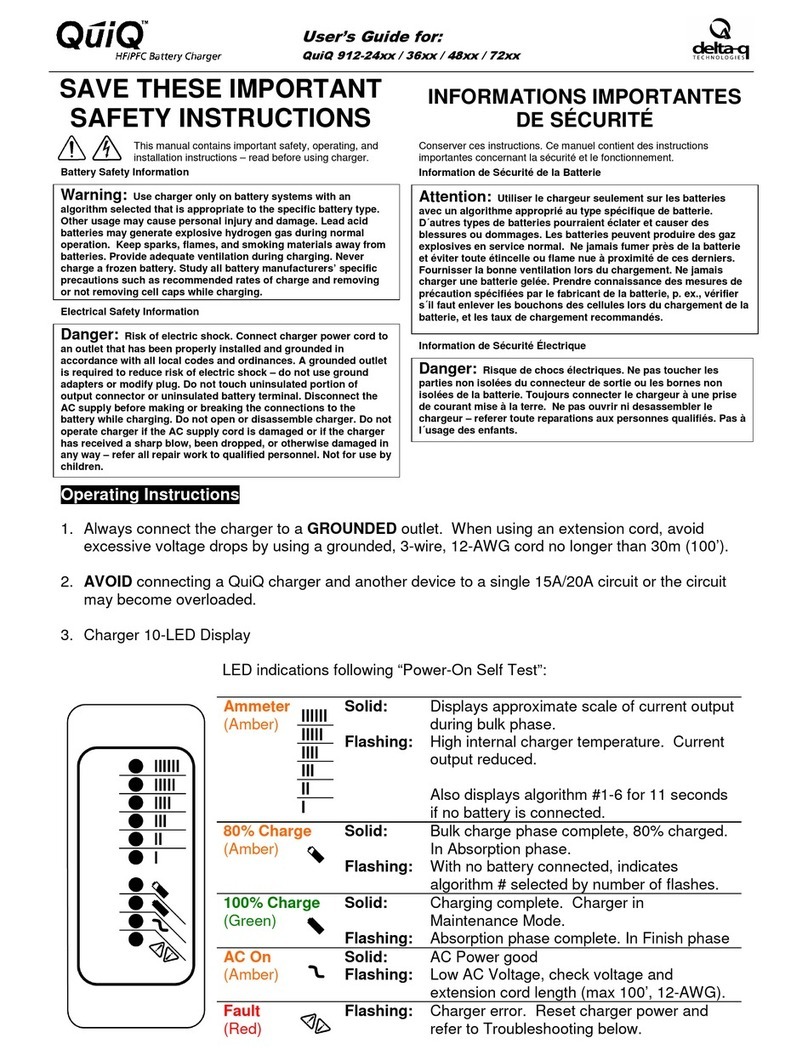
Delta-q
Delta-q QuiQ 912-24xx User manual
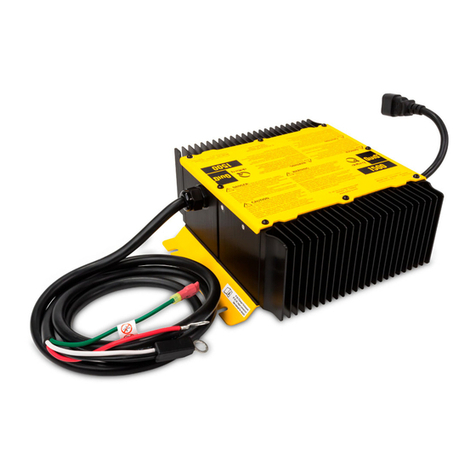
Delta-q
Delta-q QUIQ Series User manual
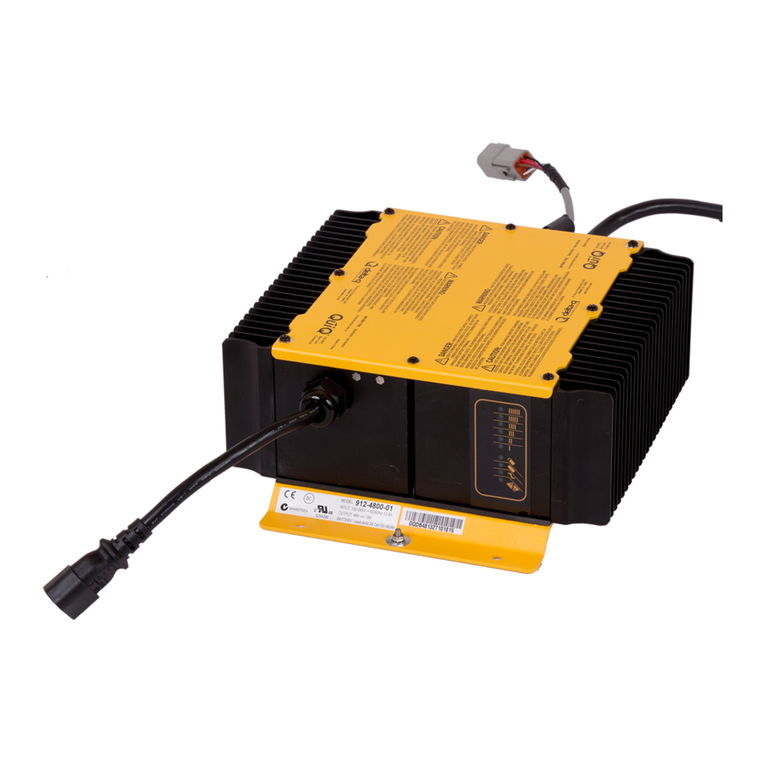
Delta-q
Delta-q QuiQ User manual
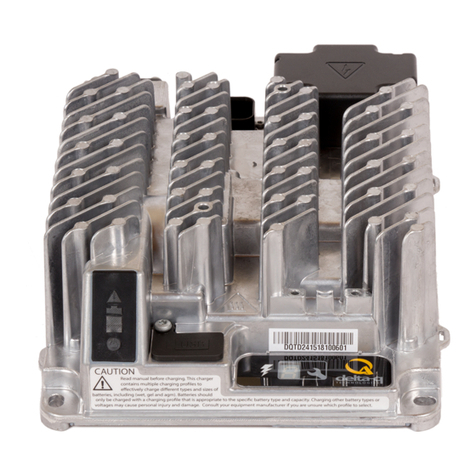
Delta-q
Delta-q IC SERIES User manual
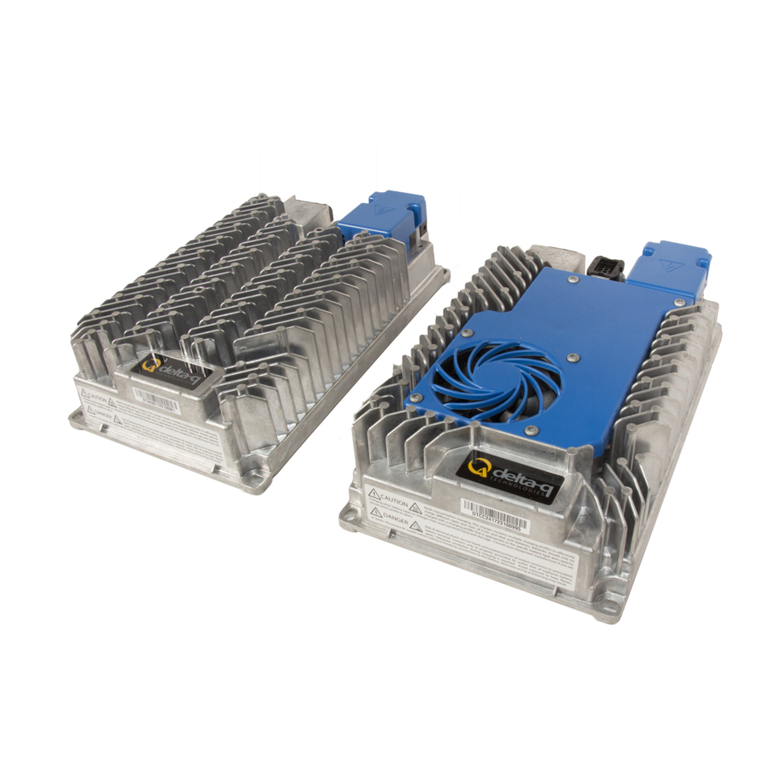
Delta-q
Delta-q RC Series User manual

Delta-q
Delta-q RC Series User manual
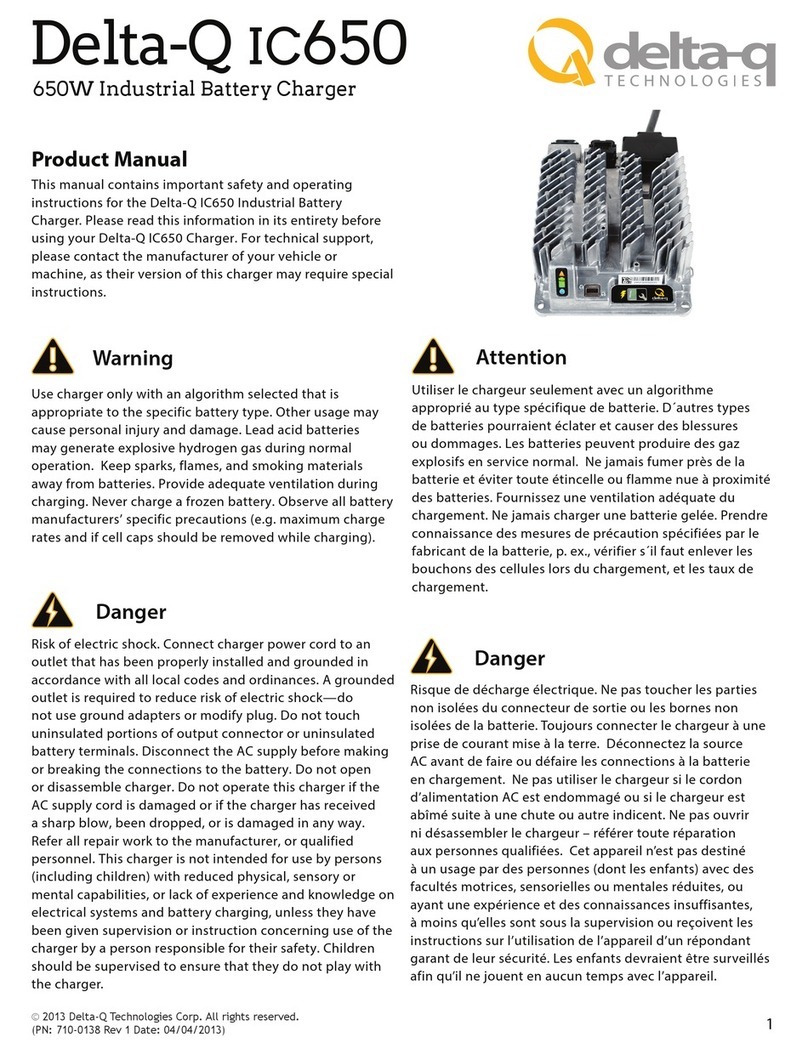
Delta-q
Delta-q IC650 User manual
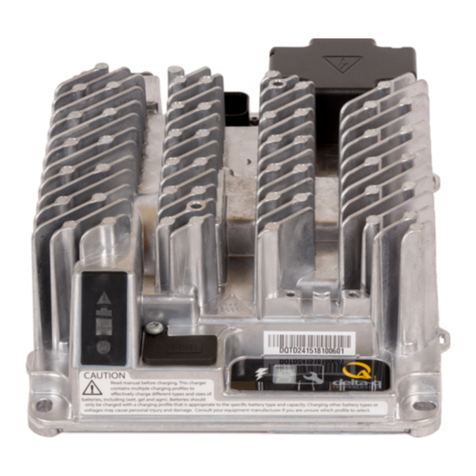
Delta-q
Delta-q EXIDE ACH027M24101 User manual
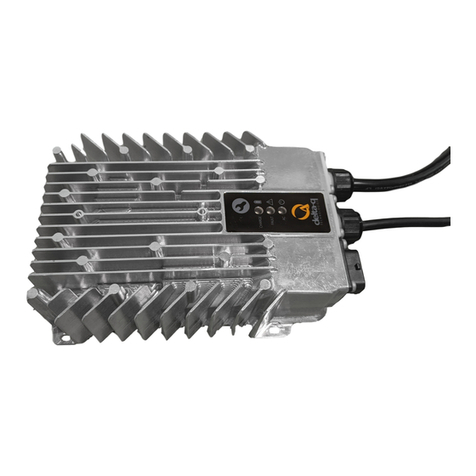
Delta-q
Delta-q RQ Series User manual

Delta-q
Delta-q QuiQ-dci User manual

